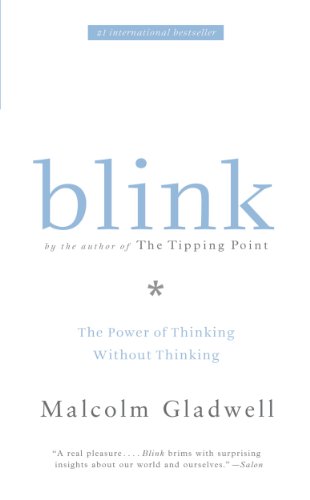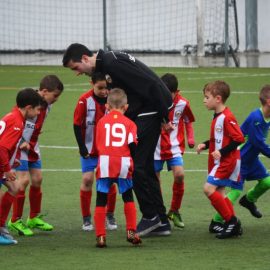

This article is an excerpt from the Shortform summary of "Blink" by Malcolm Gladwell. Shortform has the world's best summaries of books you should be reading.
Like this article? Sign up for a free trial here .
Is it possible to accurately predict the success or failure of a marriage in just 3 minutes? Does each couple have a relationship DNA that can reveal the fate of their marriage to anyone who knows what to look for? Does Gottman’s love lab results tell you how best to make your relationship fluorish?
John Gottman thinks so. Read on to learn about Gottman’s “love lab” and what your facial expressions say about your marriage.
Gottman’s Love Lab
The “love lab” is a psychology research room at the University of Washington. Since the 1980s, more than 3,000 married couples have taken part in John Gottman’s “love lab” research. Gottman’s overall goal is to understand what makes relationships healthy. The goal of this particular study is to show that, if you know which information in a marriage is relevant and which isn’t, you can accurately predict the future of that marriage. Gottman does the majority of this work in what became dubbed the “love lab.”
In the love lab, Gottman and his researchers videotape couples having a “meaningful interaction.” This could be discussing a point of contention or talking about how they met.
Gottman and his researchers also hook the subjects up to electrodes and sensors in the love lab. This tells the researchers when during the conversation the husband or wife is jiggling in his or her seat, when their hearts are pounding, and when their temperatures are rising.
Coding Emotions at the Love Lab
Additionally, in his love lab, Gottman trains all his researchers to read subjects’ emotions based on fleeting facial expressions and seemingly trivial dialogue. Each emotion has its own numerical code, and when they watch the videos, researchers assign a code to each second of the conversation. For example, disgust is coded with the number 1, contempt is 2, and whining is 11.
Using this method means that a 15-minute conversation results in 1,800 codes—60 numbers per minute per person and 900 total for each individual.
To the layman, a couple may seem to be happily having an innocuous conversation. But Gottman shows that their veiled expressions and word choices may say otherwise. Through their second-by-second coding, trained researchers at the love lab pick up on subtle facial and verbal cues that otherwise go unnoticed. Gottman uses this coding system, combined with data from the sensors, to assess the current health of a relationship and predict its future.
Results from Gottman’s Love Lab
In the love lab, Gottman can analyze an hour-long conversation and predict with 95% accuracy whether or not the couple will still be married in 15 years.
Gottman can analyze 15 minutes of the conversation and predict with 90% accuracy who will remain married. Even more impressive, one of Gottman’s colleagues can watch only 3 minutes of a couple’s conversation and accurately predict whether or not they will stay married.
Lessons From Gottman’s “Love Lab”
Gottman and his researchers at the love lab arrive at their predictions through a very deliberate, conscious method. They use a lot of data to make their predictions. They’re not guessing.
Gottman’s work in the love lab provides two important takeaways:
Gottman Love Lab Lesson #1: Identifying Patterns Increases Prediction Accuracy
In the love lab, Gottman and his researchers pick up on patterns, or “signatures,” that the conscious mind doesn’t pick up.
Predicting divorce involves identifying the patterns of unhealthy relationships. Gottman’s work demonstrates that all marriages have a “marital DNA” that underlies all of the couple’s meaningful interactions. It wouldn’t take Gottman’s team at the love lab long to identify what your relationship’s pattern is. Maybe you repeatedly ask for credit, and your spouse repeatedly withholds it. Maybe whenever you and your partner have a disagreement, no matter how minor, your partner is inflexible. If these types of interactions show up regularly in a span of 15 minutes, they’re probably part of your marital DNA.
This marital signature occurs naturally and unconsciously. It’s hard to change your marital signature once it’s established.
Gottman and his team at the love lab only look at a narrow sliver of a marriage—one hour of conversation, or even 15 minutes—and still, they find the pattern. Then they make an inference about the entire marriage.
Gottman Love Lab Lesson #2: The Process of Prediction is Frugal
Gottman and his team at the love lab don’t need a lot of information to do make their predictions about the success or failure of marriages.
Gottman’s work in the love lab demonstrates the benefits of frugality when making a decision. Too much information can overwhelm our decision-making abilities. Gottman has found that we don’t need to pay attention to every emotion when predicting the success of a marriage. We can narrow our focus, prioritizing information and zeroing in on the most important factors.
Less Information Leads to More Accurate Predictions
Gottman’s researchers gave some of his 3-minute love lab clips to marriage counselors, psychology students, marital researchers, and others who knew a lot about marriage. Even though they were experts, they were only able to predict divorces about 54% of the time, which is not much better than chance. Why did they have so much trouble?
The videos from the love lab showed the marital patterns of each couple, but the marriage counselors and other specialists had a hard time picking them out because the videos contained so many red herrings. Individuals may express dozens of subtle emotions in a span of three minutes. Such a large amount of information is overwhelming. How do you know what’s important?
In the love lab, Gottman shows that when you narrow your focus to just four problematic emotions and attitudes (defensiveness, stonewalling, criticism, and contempt), you can disregard the other data points and still make an accurate prediction about the health of a marriage.
You can further narrow your focus to a single emotion, contempt, and still predict a marriage’s future pretty accurately. If you detect contempt in a 3-minute clip, you don’t need to know anything else about a couple’s relationship to know if it’s in trouble. It is.
———End of Preview———

Like what you just read? Read the rest of the world's best summary of "Blink" at Shortform . Learn the book's critical concepts in 20 minutes or less .
Here's what you'll find in our full Blink summary :
- How you can tell if a marriage will fail, within 3 minutes
- Why your first impressions are usually surprisingly accurate
- The dark side to making first impressions, and how to avoid the,






